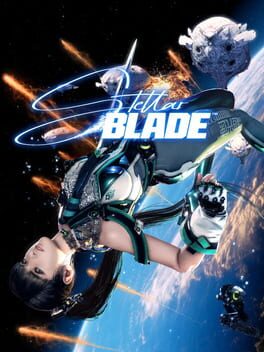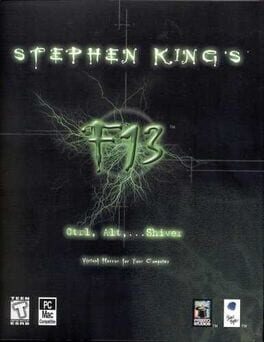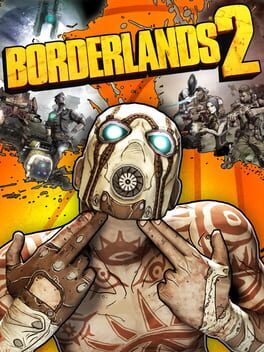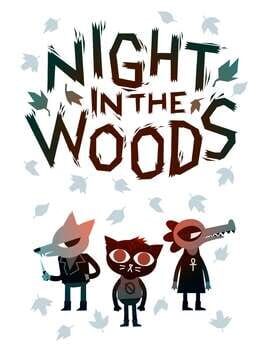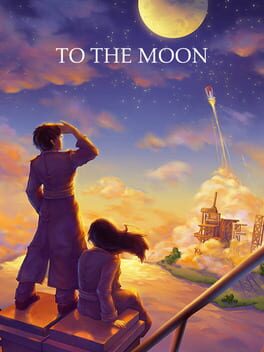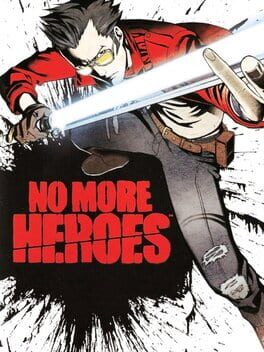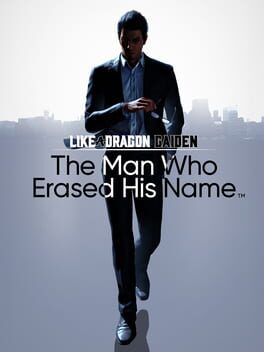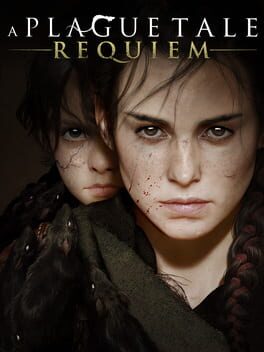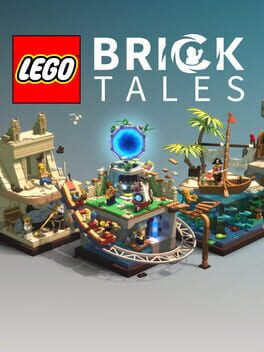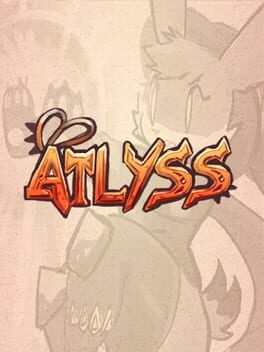Zizi_Thrush
66 reviews liked by Zizi_Thrush
Stellar Blade
2024
Unstellar Blade
A game so milquetoast that it literally crashed my PC in switching inputs from my PS5 to my main display so I could write this review, and thus I lost all of my notes I had carefully constructed over the past three days of playtime. What I pulled together is that this was an attempt at making Nier: Automata without actually making it fun and without Yoko Taro.
I remember Stellar Blade's Official Reveal as Project Eve, named after the game's main character, jumping out of an otherwise uneventful and boring Sony State of Play with its flashy combat, beautiful environments, and overwhelmingly attractive protagonist. Hot character bait aside, I was interested in this game because of the influences it was clearly wearing on its sleeve in the aforementioned Platinum Games magnum opus. Many have tried and few have succeeded in nailing hack and slash as well as Platinum or their cousins in Capcom have done with the plethora of impressive titles between the two. Did I think Stellar Blade was going to go one on one with Nier, DMCV, or Metal Gear Rising? Absolutely not, but I did think it was worth a try, to see if there was a company out there who could go to bat with the best of them and put an effort forward that would be worth paying attention to in the years to come. I was excited for Stellar Blade as the release date neared, because it meant that I could one quell the discourse over the design of Eve by providing actual input on how the game plays, and secondly because the need for a fast paced hack and slash was weighing heavily on me after playing slower burn titles like FF7R2 and P3R fairly recently. Within a day of playing my interest waned but I remained hopeful, however on the third complete day of playing and the day I ultimately completed the game... I came away fairly perturbed.
The good, lets start with that why don't we? This game is downright beautiful. I played it on my PS5 on my 4K display with HDR enabled and woah nelly, it looked great. One of the greatest aspects of this title was how great both characters and the world looked from a graphical standpoint. As you transition from dilapidated buildings and streets into destroyed railways and misgiving deserts, your eyes will feast at the eye candy abound in the backgrounds of the world. I found myself navigating the camera up and down constantly at the world I was interacting with as it was tremendously rich in flavour and care from a design standpoint. I felt like the developers put a great deal of effort into creating a visually striking game, which unfortunately seems to have accompanied a trade off in other aspects of the title. More to come on that shortly, as I do want to praise the team for putting some of the best facial and body design in gaming forward. As I've already experienced, much of the conversation about Stellar Blade has been lost in the perceived attractiveness of Eve, but every character you interact with truly looks incredible. Though their proportions and mannerisms may not be totally... human, they are indubitably crafted with an intricacy and care to look astonishing. Stellar Blade if nothing else is a journey of eye candy, but that's kind of... it.
While not exactly fast enough to be a Nier-like, and notfun punishing and explore heavy enough to be a Souls-like, Stellar Blade attempted to forge a path forward that played out like a middle ground between Sekiro: Shadows Die Twice and the Jedi: Fallen Order/Survivor games. Eve's combat relies on using a plethora of learned abilities and tech to parry and dodge her way through a litany of grotesque alien foes who have claimed Earth to be their own. Where this goes wrong is in quite a few places, but the most apparent and earliest was in the poor "janky" feel and lack of reliability in both parry and dodge timings. This can be sort-of remedied by investing in Eve's skill trees and upgrading Eve's exo-spine but never really feels... good. Even if I was a dissenter of Sekiro over all, I felt like it mostly gave the right kind of feedback and snap to the parry/dodge timings required to master such a difficult title. For a game as infuriatingly hard as Stellar Blade gets in its late game, I felt like I was at the whimsy of luck in my dodges not directly feeding into a followup attack by a boss and my perfect parries not being read by the game because of poor latency or buffer timing. Time after time I'd land a perfect dodge only to be hit by the boss moving faster than Eve could recover right after. Cheap is the way I'd put that and it proliferated throughout the entire runtime of the title.
Difficulty is something I've spoken about ad nauseum in action-rpg titles and I'll continue to do so as I have an affinity for these kinds of games. After grinding my teeth in the (generally) slower paced Fromsoft classics and the speedy Platinum/Capcom games of the last decade and change, I feel like I'm fairly qualified. Stellar Blade early on feels hard, but not in a way that cannot be conquered. If I was getting my tail kicked by a group of world enemies or a boss, I found that I could readjust my stratagems to craft a better gameplan, coming back smarter and using my abilities at optimized times to come out victorious. I found my confidence growing, something that did not happen this early in Sekiro, and I continued on to the later stages of the game. I opened up my Playstation menu to check my progress, a feature of the console that tracks how far you've made it through the main story, and saw I had notched at 89%. I labored on to the area boss on one of the last major quests of the game. It was here I through my face into a wall, stressing with every ability and item I had to make it through the three phases and effective six health bars that the boss had. I double this up because of the way shields work. See in Stellar Blade, simply doing damage and having fun taking down your enemy's health bar is simply not allowed, you must first deplete their shields before you can do any "meaningful" damage to their hitpoints. Meaningful in quotations because even then on a fully upgraded weapon, after laboriously taking away the superfluous shield bar, you are granted the ability to do slightly more damage to the bosses health per hit. I've played Dark Souls underleveled and with un-upgraded weapons enough to know torment when it comes to weapons doing very little damage to bosses... and even that does not compare to how insulting Stellar Blade's damage counter feels.
It wasn't even until a few bosses later that I truly came to terms with my disdain for the needlessly draconian difficulty that exists within Stellar Blade's late game boss fights. I threw everything together that I could into defeating the (name kept out of review due to spoiler) boss. I thought I could craft a winning effort of combining my ultimate abilities with my tertiary skills and burst maneuvers, but nothing was taking. I couldn't perfect dodge and parry any longer against the multi-faceted and multi-phase boss fight at hand. Visual clarity was completely nuked from orbit as I could barely tell what moves were hitting me, where certain objects were, or where my Eve's reactions would take me next. A greater qualm I have with games at large now, I wrote about these most notably in my FFXVI DLC reviews, is a complete lack of being able to actually see what's going on in boss fights because of the "ooh how cool" quality that moves need to have. Keeping this in mind, the bosses began to teleport away CONSTANTLY from Eve so as to reposition their efforts while tarnishing any offensive effort I had put forth. This was rhythm breaking and tore any motivation I had towards chasing the enemy down, I felt discouraged and unmotivated to capitalize on optimized windows because I knew the boss would simply teleport away at any given moment. After being unable to keep up with this, the visuals going on, and the randomly included DPS checks, I put the game on "story mode" (reminder this is in the last hour or so of a medium length title) and kept chugging. I'm not actually sure this did anything to make the game easier. What it does in theory is give you windows to dodge and parry, popping up with on screen prompts of what button to press to not be hit by the enemies maneuvers. Does this work? Absolutely not. Most of the time these move to fast to even parse what move you're supposed to use, and half the bosses moves don't even populate your screen with a prompt at all. Through the next couple bosses and into the final boss I became increasingly confused if this was actually a difficulty slider at all or simply an effort to make you "feel" better by putting a semblance of choice of difficulty in front of you.
A best in class soundtrack (potentially one of the best of the year) and impressive visuals couldn't prop Stellar Blade up enough to go against its resoundingly poor English VA (I eventually played in Korean,) drab narrative heavily borrowed from Nier: Automata, and impressively frustrating and unrewarding combat. This is absolutely not a title worthy of purchasing at a $70 price tag, maybe half of that at best. I commend Sony and SHIFT UP for putting together a brand new IP and throwing some serious marketing at making this game stick out, but it felt like a great value Sekiro meets Nier at best. I would not recommend Stellar Blade to anyone with a PS5.
A game so milquetoast that it literally crashed my PC in switching inputs from my PS5 to my main display so I could write this review, and thus I lost all of my notes I had carefully constructed over the past three days of playtime. What I pulled together is that this was an attempt at making Nier: Automata without actually making it fun and without Yoko Taro.
I remember Stellar Blade's Official Reveal as Project Eve, named after the game's main character, jumping out of an otherwise uneventful and boring Sony State of Play with its flashy combat, beautiful environments, and overwhelmingly attractive protagonist. Hot character bait aside, I was interested in this game because of the influences it was clearly wearing on its sleeve in the aforementioned Platinum Games magnum opus. Many have tried and few have succeeded in nailing hack and slash as well as Platinum or their cousins in Capcom have done with the plethora of impressive titles between the two. Did I think Stellar Blade was going to go one on one with Nier, DMCV, or Metal Gear Rising? Absolutely not, but I did think it was worth a try, to see if there was a company out there who could go to bat with the best of them and put an effort forward that would be worth paying attention to in the years to come. I was excited for Stellar Blade as the release date neared, because it meant that I could one quell the discourse over the design of Eve by providing actual input on how the game plays, and secondly because the need for a fast paced hack and slash was weighing heavily on me after playing slower burn titles like FF7R2 and P3R fairly recently. Within a day of playing my interest waned but I remained hopeful, however on the third complete day of playing and the day I ultimately completed the game... I came away fairly perturbed.
The good, lets start with that why don't we? This game is downright beautiful. I played it on my PS5 on my 4K display with HDR enabled and woah nelly, it looked great. One of the greatest aspects of this title was how great both characters and the world looked from a graphical standpoint. As you transition from dilapidated buildings and streets into destroyed railways and misgiving deserts, your eyes will feast at the eye candy abound in the backgrounds of the world. I found myself navigating the camera up and down constantly at the world I was interacting with as it was tremendously rich in flavour and care from a design standpoint. I felt like the developers put a great deal of effort into creating a visually striking game, which unfortunately seems to have accompanied a trade off in other aspects of the title. More to come on that shortly, as I do want to praise the team for putting some of the best facial and body design in gaming forward. As I've already experienced, much of the conversation about Stellar Blade has been lost in the perceived attractiveness of Eve, but every character you interact with truly looks incredible. Though their proportions and mannerisms may not be totally... human, they are indubitably crafted with an intricacy and care to look astonishing. Stellar Blade if nothing else is a journey of eye candy, but that's kind of... it.
While not exactly fast enough to be a Nier-like, and not
Difficulty is something I've spoken about ad nauseum in action-rpg titles and I'll continue to do so as I have an affinity for these kinds of games. After grinding my teeth in the (generally) slower paced Fromsoft classics and the speedy Platinum/Capcom games of the last decade and change, I feel like I'm fairly qualified. Stellar Blade early on feels hard, but not in a way that cannot be conquered. If I was getting my tail kicked by a group of world enemies or a boss, I found that I could readjust my stratagems to craft a better gameplan, coming back smarter and using my abilities at optimized times to come out victorious. I found my confidence growing, something that did not happen this early in Sekiro, and I continued on to the later stages of the game. I opened up my Playstation menu to check my progress, a feature of the console that tracks how far you've made it through the main story, and saw I had notched at 89%. I labored on to the area boss on one of the last major quests of the game. It was here I through my face into a wall, stressing with every ability and item I had to make it through the three phases and effective six health bars that the boss had. I double this up because of the way shields work. See in Stellar Blade, simply doing damage and having fun taking down your enemy's health bar is simply not allowed, you must first deplete their shields before you can do any "meaningful" damage to their hitpoints. Meaningful in quotations because even then on a fully upgraded weapon, after laboriously taking away the superfluous shield bar, you are granted the ability to do slightly more damage to the bosses health per hit. I've played Dark Souls underleveled and with un-upgraded weapons enough to know torment when it comes to weapons doing very little damage to bosses... and even that does not compare to how insulting Stellar Blade's damage counter feels.
It wasn't even until a few bosses later that I truly came to terms with my disdain for the needlessly draconian difficulty that exists within Stellar Blade's late game boss fights. I threw everything together that I could into defeating the (name kept out of review due to spoiler) boss. I thought I could craft a winning effort of combining my ultimate abilities with my tertiary skills and burst maneuvers, but nothing was taking. I couldn't perfect dodge and parry any longer against the multi-faceted and multi-phase boss fight at hand. Visual clarity was completely nuked from orbit as I could barely tell what moves were hitting me, where certain objects were, or where my Eve's reactions would take me next. A greater qualm I have with games at large now, I wrote about these most notably in my FFXVI DLC reviews, is a complete lack of being able to actually see what's going on in boss fights because of the "ooh how cool" quality that moves need to have. Keeping this in mind, the bosses began to teleport away CONSTANTLY from Eve so as to reposition their efforts while tarnishing any offensive effort I had put forth. This was rhythm breaking and tore any motivation I had towards chasing the enemy down, I felt discouraged and unmotivated to capitalize on optimized windows because I knew the boss would simply teleport away at any given moment. After being unable to keep up with this, the visuals going on, and the randomly included DPS checks, I put the game on "story mode" (reminder this is in the last hour or so of a medium length title) and kept chugging. I'm not actually sure this did anything to make the game easier. What it does in theory is give you windows to dodge and parry, popping up with on screen prompts of what button to press to not be hit by the enemies maneuvers. Does this work? Absolutely not. Most of the time these move to fast to even parse what move you're supposed to use, and half the bosses moves don't even populate your screen with a prompt at all. Through the next couple bosses and into the final boss I became increasingly confused if this was actually a difficulty slider at all or simply an effort to make you "feel" better by putting a semblance of choice of difficulty in front of you.
A best in class soundtrack (potentially one of the best of the year) and impressive visuals couldn't prop Stellar Blade up enough to go against its resoundingly poor English VA (I eventually played in Korean,) drab narrative heavily borrowed from Nier: Automata, and impressively frustrating and unrewarding combat. This is absolutely not a title worthy of purchasing at a $70 price tag, maybe half of that at best. I commend Sony and SHIFT UP for putting together a brand new IP and throwing some serious marketing at making this game stick out, but it felt like a great value Sekiro meets Nier at best. I would not recommend Stellar Blade to anyone with a PS5.
Stellar Blade
2024
Stellar Blade
2024
Stellar Blade
2024
Stephen King's F13
1999
This was one of the few games I got to play on the family Mac and i remember being creeped out by it to where I stopped playing it all together. Now 15 years later after randomly remembering it, I decided to give the game another look and it had to be age cause this "game" is really underwhelming, especially something with the King of Horror's name attached to it. Its basically a demo disc with a few minigames, screensavers and the entirety of Stephen King's Everythings Eventual, it even comes with a "spooky" soundboard of stock sound effects. Whats really bizarre about this is that its made by Presto Studios, known for the acclaimed Journeyman series, during the tailend of their run before being shut down in 2002. I also expected there to be a lot more to the game but it really is just a 30 min venture if you leave out the novella, and with the quality and lack of real connection to Stephen King, this game is really dissapointing
Borderlands 2
2012
As an act of rebellion to avoid playing another game, i decided to spent 3 full days getting all the achievements in BL2 for the first time, as redemption to my younger self who put almost every game aside to play nothing but multiplayer shooters for 4-5 years. I do remember this one being the most fun to play, aside from BL1 which is my fav all around being introduced to it in 2011. Gunplay and build crafting is simple and enjoyable i played Axton for the first time so i went with a turret/kill skill build that made my normal playthrough trivial. Now, not having played this game in quite a few years i had forgotten the majority of the dialogue or jokes written and it has to be just the over-saturation of the style of writing, but after the halfway point and for all the DLCs i was tuning that out. I dont know if BL2 is seen as the perfect middle ground of snappy and good writing compared to the other ones (especially BL3) but i was generally bored when it came to having to pay attention to the story, and almost any wit gave me an excuse to eye roll especially with the dated humour, but those got a pity laugh for them even adding it in the first place (they had a Do it for the Vine Badass Challenge name and its there forever). And of course the massive positive i can give the game is the grind it gives you for gear, i didn't do too much of that during my playthrough but if i get bored and return i know for sure i can go hours killing the same boss for a specific thing. All in all BL2 still holds up as an amazing looter shooter with those fundamentals honed in, while i feel like i moved away from its style of writing, i know some people that will quote this and other BL games for hours and die laughing in the process.
Floigan Bros.
2001
Assemble With Care
2019
Assemble With Care is one of the most relaxing games I’ve played in a long time. It’s got satisfying gameplay, stunning visuals, and wonderful voice acting. Everything about it oozes with charm, in a way where I can just see how much love went into its development. For only being an hour and a half long, it definitely leaves a lasting impression.
We play as a traveling repairwoman named Maria, whose most recent stop has taken her to a European city named Bellariva for their annual food festival. While there, she finds repair jobs to make pocket money - and she ends up meeting a cast of lovable characters, each with their own sentimental items that need fixing.
A big part of Assemble With Care’s story focuses on that exact sentimentality toward beloved items, and the personal stories we attach to them. The very first job Maria takes on is making the tape player owned by a girl named Izzy play again; we learn afterwards that it holds a recording of Izzy’s deceased mother singing her a lullaby. Each and every item we work on throughout the game is similarly important to its respective owner, for one reason or another.
Little Izzy is the first of our side characters, followed by her father Joseph, Bellariva’s mayor. They have your classic “busy dad” arc; he throws himself into his work because of the sadness over losing his wife, but his relationship with his own daughter is suffering because of it.
The second half of the story is made up of Carmen and Helena, a pair of sisters struggling to maintain their long distance relationship during financial difficulties. Carmen is warm and a bit absentminded, while Helena is the aloof and responsible older sister. Carmen owns a humble Bellarivan cafe that’s, unfortunately, not making any money. She calls Helena hoping to borrow the entry fee for the food festival (and by extension, the contest held during to be declared the best food in the city.) However, this isn’t the first time she’s asked for money, and Helena decides to visit from the big city to discuss things in person.
Assemble With Care’s overarching theme focuses on the reparations of these familial relationships as much as the items themselves; in fact, Maria must learn to address her emotional distance from her own parents after having left to travel. But this pinpoint focus on blood family is, unfortunately, the weakest part of the whole game for me. Not because it’s badly written, although I do feel the last few acts are a bit rushed and could’ve used one or two more levels. It’s because, as a queer person, I simply don’t believe that blood relatives inherently deserve to be called family and receive your unconditional love and support.
Izzy and Joseph, Carmen and Helena, both pairs truly love each other and work through their differences - but that’s not always how it is in real life. I find plots that hammer home how important family should always be just don’t resonate with me. Sometimes it’s genuinely better to not have those people around.
Another gripe I have on the story side of things is Maria herself. She’s a likable character, but she rarely feels like more than an observer who just happens to witness the healing of these relationships. We’re not even present when either pair finally make amends - we just hear about it later. I would’ve liked for her to be a more active participant in not just the gameplay, but the world unfolding around her.
All of that being said, I still do like the cast in Assemble With Care, and I think a big reason for that is the voice acting. Each character not only has a distinct and memorable voice, but the VAs do a great job of conveying emotion in their performances. Where the story is a bit generic and predictable, the VAs still manage to inject life into it; they’re what really make everything feel believable.
Just as good, if not better, is the music. In fact, I think this is one of my favorite soundtracks I’ve heard in a while! It beautifully captures the coziness of small town vibes, and maintains the perfect relaxing atmosphere throughout the entire story. Many pieces are led by keyboard, and there’s occasionally an acoustic guitar; in fact, a lot of them sound like what you might hear played at a coffee shop somewhere just like Bellariva.
The art is also absolutely amazing, presenting the narrative through a unique, storybook-like lens. ‘Cutscenes’ that play before and after a repair are actually a series of ‘pages’; each ‘page’ shows off a piece that truly feels like you’re looking at a real-life painted canvas. The color palettes are warm and full of life, especially against the standard stark white background of the ‘page’. The presentation makes Bellariva feel like a real place you’d dream of visiting one day.
That’s not to mention the stunning character art! Each cast member has an exceptional design, with bold shape language and amazing color combinations - the latter of which connect them directly to their respective family member. Joseph and Izzy’s clothing share a rusty red and sky blue, while both of their neck accessories (a tie/headphones respectively) are pale yellow. On the other hand, Carmen wears bright yellow and warm shades of blue, while Helena wears more cool, chic blues and chartreuse; these similar-but-different tones perfectly convey their familial closeness yet totally opposite personalities. Carmen also has a striped towel over her shoulder that matches Helena’s shirt closely!
The repair sections are possibly even better-looking, bringing motion to the game’s beautiful art style. Each level has a unique background that matches whichever setting Maria is in, from tiled floors to a tablecloth covered in Izzy’s doodles. The colors are, of course, as consistently wonderful as ever - and another specific standout here is the detailed lighting. In scenes taking place outside, the entire screen is well-lit, with only a few shadows casted here and there. If she’s inside, she’ll work in the light from each setting’s unique window. You can clearly make out the shadows left by not only these windows, but by nearby plants as well. It all adds so much to the atmosphere.
Even Assemble With Care’s pause menu is aesthetically considered, taking the form of a clickable coffee cup in the corner (or a half-eaten cookie in the epilogue!) But my favorite part is easily the texture work. The objects look as if they’ve been painted with a brush; their textures move back and forth slightly to bring life to them. You can clearly tell plastic from painted metal, and painted metal from unpainted.
The gameplay itself is simple, but very effective. It’s always clear what your next step is for a repair; the satisfaction instead comes from how tactile it feels to actually do all of it. Unscrewing screws, removing parts, connecting wires - it feels as if you really are Maria, with her practiced ability to make things tick again. Personally, I preferred this method to a more puzzle-heavy alternative. I was worried before playing that potentially complex mechanics based around a real-life skill (which I don’t possess) would be too difficult for me to engage with.
The best part, though, are the little interactions you or the other characters may have with an object while finishing up a job. It feels so rewarding to get these moments of flavor and character building. After you repair Izzy’s tape player, you get to hear her mother’s lullaby. While putting together a neon sign for Carmen’s restaurant, you can choose between three foods to add to it (a pizza slice, an ice cream cone, and a margarita.) You even get to play a quick and easy little minigame on a GameBoy equivalent after fixing it. There’s even more, but you get the picture, I don’t want to spoil all of them!
I also really appreciate the wide range of objects and types of repairs you’re doing. Some jobs are for antiques or family heirlooms, while others are for electronics. There are even fake brand names given to each object, displayed at the top of the screen after finishing a job.
There’s a surprising amount of good worldbuilding moments in Assemble With Care - even if it’s not very intricate. For example, the game almost never discusses money directly. All we know is that Maria needs some to attend the food festival, that Joseph will pay Maria for her work, and that Carmen’s business is failing. Yet, we never see Maria charge a client on-screen. These interactions are simply left out. This omission of the finance talk makes the game feel all the more cozier; you just don’t have to think about capitalism more than needed for the sake of the story.
To wrap up, Assemble With Care may not be a perfect game, but it has many strengths. It’s fun, it’s relaxing, it’s heartfelt, and it’s unique. The presentation is immaculate, and the gameplay is close to perfectly executed. I came here for a casual, calm experience, and that’s exactly what I got.
Its only real blind spot is a slightly bland story that doesn’t personally connect with me - still, it very well could you. It’s worth playing either way in my opinion, though, as its pros heavily outweigh any cons. This is simply one of the most charming games I’ve played in a long time.
Visuals: 5/5
Sound: 5/5
Story: 3/5
Gameplay: 4.5/5
Worldbuilding: 3.5/5
Overall Game Score: 4/5 [4.2/5]
We play as a traveling repairwoman named Maria, whose most recent stop has taken her to a European city named Bellariva for their annual food festival. While there, she finds repair jobs to make pocket money - and she ends up meeting a cast of lovable characters, each with their own sentimental items that need fixing.
A big part of Assemble With Care’s story focuses on that exact sentimentality toward beloved items, and the personal stories we attach to them. The very first job Maria takes on is making the tape player owned by a girl named Izzy play again; we learn afterwards that it holds a recording of Izzy’s deceased mother singing her a lullaby. Each and every item we work on throughout the game is similarly important to its respective owner, for one reason or another.
Little Izzy is the first of our side characters, followed by her father Joseph, Bellariva’s mayor. They have your classic “busy dad” arc; he throws himself into his work because of the sadness over losing his wife, but his relationship with his own daughter is suffering because of it.
The second half of the story is made up of Carmen and Helena, a pair of sisters struggling to maintain their long distance relationship during financial difficulties. Carmen is warm and a bit absentminded, while Helena is the aloof and responsible older sister. Carmen owns a humble Bellarivan cafe that’s, unfortunately, not making any money. She calls Helena hoping to borrow the entry fee for the food festival (and by extension, the contest held during to be declared the best food in the city.) However, this isn’t the first time she’s asked for money, and Helena decides to visit from the big city to discuss things in person.
Assemble With Care’s overarching theme focuses on the reparations of these familial relationships as much as the items themselves; in fact, Maria must learn to address her emotional distance from her own parents after having left to travel. But this pinpoint focus on blood family is, unfortunately, the weakest part of the whole game for me. Not because it’s badly written, although I do feel the last few acts are a bit rushed and could’ve used one or two more levels. It’s because, as a queer person, I simply don’t believe that blood relatives inherently deserve to be called family and receive your unconditional love and support.
Izzy and Joseph, Carmen and Helena, both pairs truly love each other and work through their differences - but that’s not always how it is in real life. I find plots that hammer home how important family should always be just don’t resonate with me. Sometimes it’s genuinely better to not have those people around.
Another gripe I have on the story side of things is Maria herself. She’s a likable character, but she rarely feels like more than an observer who just happens to witness the healing of these relationships. We’re not even present when either pair finally make amends - we just hear about it later. I would’ve liked for her to be a more active participant in not just the gameplay, but the world unfolding around her.
All of that being said, I still do like the cast in Assemble With Care, and I think a big reason for that is the voice acting. Each character not only has a distinct and memorable voice, but the VAs do a great job of conveying emotion in their performances. Where the story is a bit generic and predictable, the VAs still manage to inject life into it; they’re what really make everything feel believable.
Just as good, if not better, is the music. In fact, I think this is one of my favorite soundtracks I’ve heard in a while! It beautifully captures the coziness of small town vibes, and maintains the perfect relaxing atmosphere throughout the entire story. Many pieces are led by keyboard, and there’s occasionally an acoustic guitar; in fact, a lot of them sound like what you might hear played at a coffee shop somewhere just like Bellariva.
The art is also absolutely amazing, presenting the narrative through a unique, storybook-like lens. ‘Cutscenes’ that play before and after a repair are actually a series of ‘pages’; each ‘page’ shows off a piece that truly feels like you’re looking at a real-life painted canvas. The color palettes are warm and full of life, especially against the standard stark white background of the ‘page’. The presentation makes Bellariva feel like a real place you’d dream of visiting one day.
That’s not to mention the stunning character art! Each cast member has an exceptional design, with bold shape language and amazing color combinations - the latter of which connect them directly to their respective family member. Joseph and Izzy’s clothing share a rusty red and sky blue, while both of their neck accessories (a tie/headphones respectively) are pale yellow. On the other hand, Carmen wears bright yellow and warm shades of blue, while Helena wears more cool, chic blues and chartreuse; these similar-but-different tones perfectly convey their familial closeness yet totally opposite personalities. Carmen also has a striped towel over her shoulder that matches Helena’s shirt closely!
The repair sections are possibly even better-looking, bringing motion to the game’s beautiful art style. Each level has a unique background that matches whichever setting Maria is in, from tiled floors to a tablecloth covered in Izzy’s doodles. The colors are, of course, as consistently wonderful as ever - and another specific standout here is the detailed lighting. In scenes taking place outside, the entire screen is well-lit, with only a few shadows casted here and there. If she’s inside, she’ll work in the light from each setting’s unique window. You can clearly make out the shadows left by not only these windows, but by nearby plants as well. It all adds so much to the atmosphere.
Even Assemble With Care’s pause menu is aesthetically considered, taking the form of a clickable coffee cup in the corner (or a half-eaten cookie in the epilogue!) But my favorite part is easily the texture work. The objects look as if they’ve been painted with a brush; their textures move back and forth slightly to bring life to them. You can clearly tell plastic from painted metal, and painted metal from unpainted.
The gameplay itself is simple, but very effective. It’s always clear what your next step is for a repair; the satisfaction instead comes from how tactile it feels to actually do all of it. Unscrewing screws, removing parts, connecting wires - it feels as if you really are Maria, with her practiced ability to make things tick again. Personally, I preferred this method to a more puzzle-heavy alternative. I was worried before playing that potentially complex mechanics based around a real-life skill (which I don’t possess) would be too difficult for me to engage with.
The best part, though, are the little interactions you or the other characters may have with an object while finishing up a job. It feels so rewarding to get these moments of flavor and character building. After you repair Izzy’s tape player, you get to hear her mother’s lullaby. While putting together a neon sign for Carmen’s restaurant, you can choose between three foods to add to it (a pizza slice, an ice cream cone, and a margarita.) You even get to play a quick and easy little minigame on a GameBoy equivalent after fixing it. There’s even more, but you get the picture, I don’t want to spoil all of them!
I also really appreciate the wide range of objects and types of repairs you’re doing. Some jobs are for antiques or family heirlooms, while others are for electronics. There are even fake brand names given to each object, displayed at the top of the screen after finishing a job.
There’s a surprising amount of good worldbuilding moments in Assemble With Care - even if it’s not very intricate. For example, the game almost never discusses money directly. All we know is that Maria needs some to attend the food festival, that Joseph will pay Maria for her work, and that Carmen’s business is failing. Yet, we never see Maria charge a client on-screen. These interactions are simply left out. This omission of the finance talk makes the game feel all the more cozier; you just don’t have to think about capitalism more than needed for the sake of the story.
To wrap up, Assemble With Care may not be a perfect game, but it has many strengths. It’s fun, it’s relaxing, it’s heartfelt, and it’s unique. The presentation is immaculate, and the gameplay is close to perfectly executed. I came here for a casual, calm experience, and that’s exactly what I got.
Its only real blind spot is a slightly bland story that doesn’t personally connect with me - still, it very well could you. It’s worth playing either way in my opinion, though, as its pros heavily outweigh any cons. This is simply one of the most charming games I’ve played in a long time.
Visuals: 5/5
Sound: 5/5
Story: 3/5
Gameplay: 4.5/5
Worldbuilding: 3.5/5
Overall Game Score: 4/5 [4.2/5]
Tingus Goose
2024
4 lists liked by Zizi_Thrush
